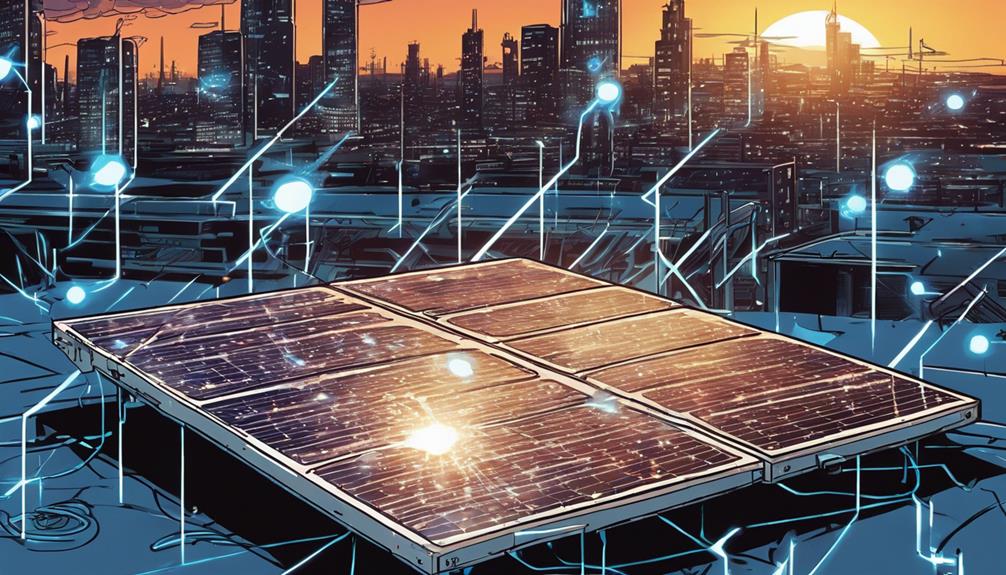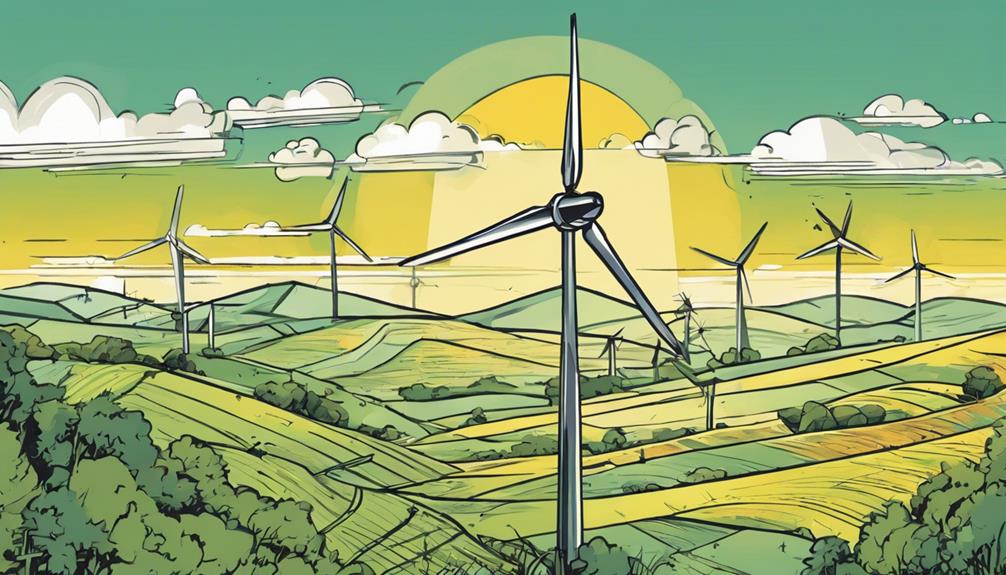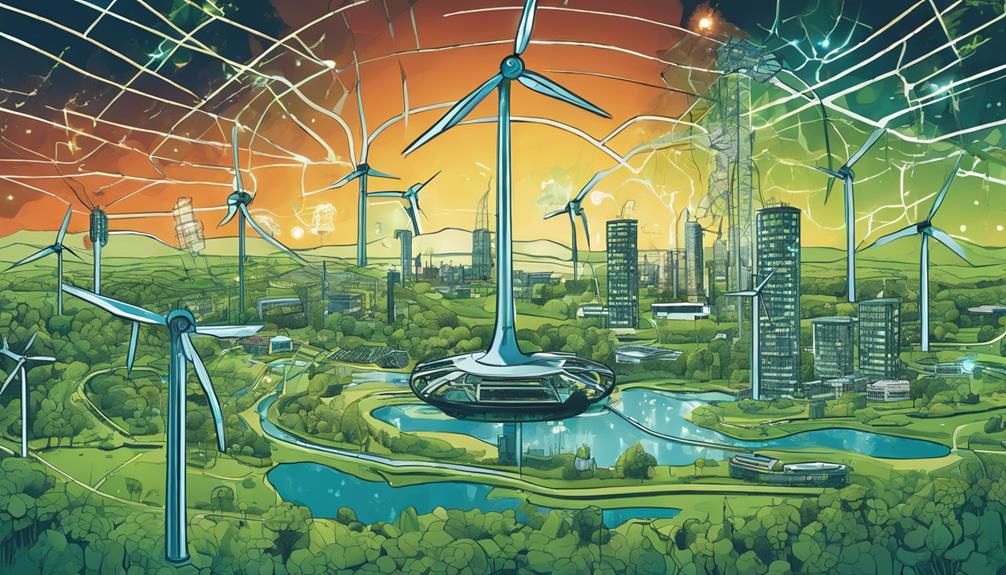I'm impressed by how PG&E ingeniously harnesses surplus solar energy By leveraging cutting-edge energy storage solutions, I can optimize my solar panel potential and reduce my reliance on the grid. PG&E's innovative approaches guarantee a stable and dependable energy supply, effectively managing surplus solar power and feeding it back into the grid. This not only reduces strain on traditional power sources but also contributes to a sustainable energy future. As I explore further, I'm excited to learn more about how PG&E's expertise is paving the way for a sustainable grid system.
Key Takeaways
- PG&E's innovative approaches optimize surplus solar energy, reducing reliance on fossil fuels and contributing to a sustainable energy future.
- Excess energy is stored in batteries or other solutions, maximizing solar panel potential and ensuring a stable energy supply.
- Net metering and feed-in tariffs enable efficient management of surplus energy, providing credits on energy bills and promoting sustainable usage.
- PG&E's expertise in surplus solar energy management reduces strain on traditional power sources, balancing energy supply and demand in real-time.
- The utility's sustainable grid system promotes the efficient utilization of excess energy, mitigating climate change and supporting a low-carbon future.
Excess Energy Storage Solutions
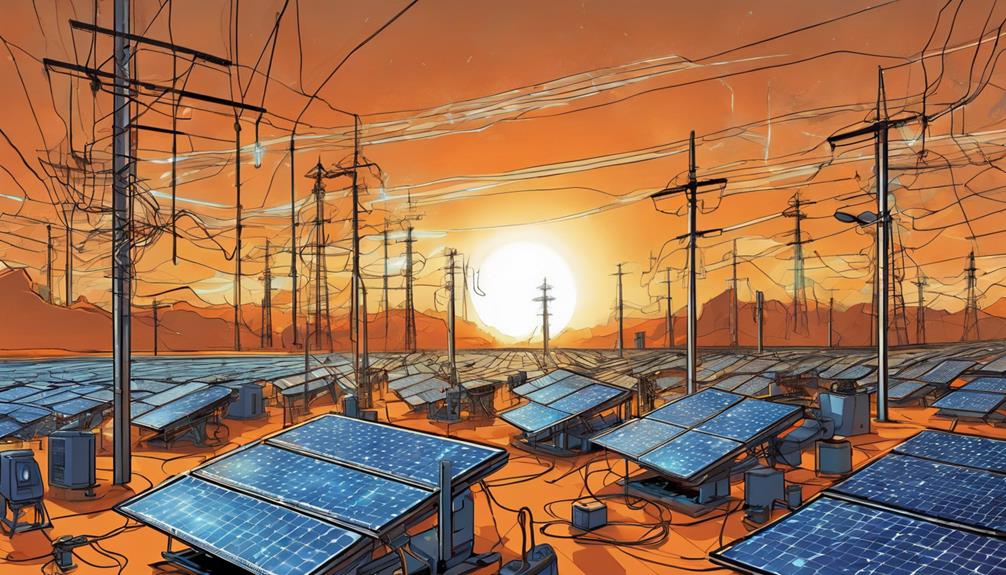
As I produce more solar energy than I need, I can store the surplus in batteries or other storage solutions to use later, reducing my dependence on the grid and maximizing my solar panel's potential. PG&E offers storage options like batteries, enabling me to utilize excess energy for nighttime use or during power outages. This integration with the grid guarantees a stable and dependable energy supply.
Managing Surplus Solar Power
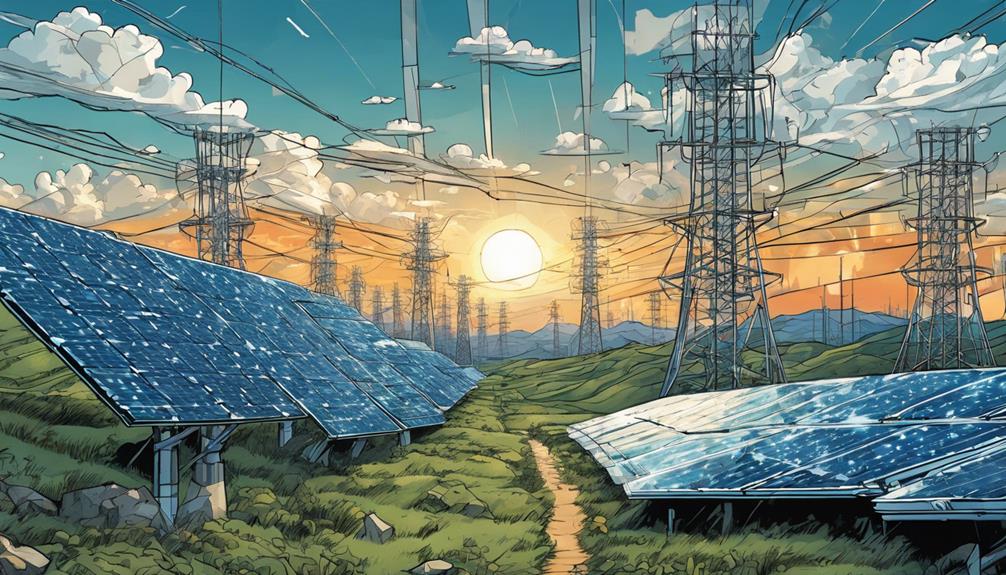
I can rely on PG&E to manage the surplus solar power generated by my panels, ensuring that excess energy is efficiently utilized and credited to my account. As a customer, I appreciate the innovative approaches they've implemented to optimize the use of renewable energy.
| Management Method | Description |
|---|---|
| Net Metering | Excess energy is sent back to the grid and credited to my account |
| Feed-in Tariffs | Fixed rate paid for surplus energy generated |
| Grid Integration | Balances energy supply and demand |
| Energy Storage | Batteries store excess energy for later use |
| Time-of-Use Rates | Strategies to optimize energy usage |
With PG&E's expertise, I'm confident that my surplus solar power is being harnessed effectively, reducing my reliance on fossil fuels and contributing to a sustainable grid system.
Grid Integration and Balance
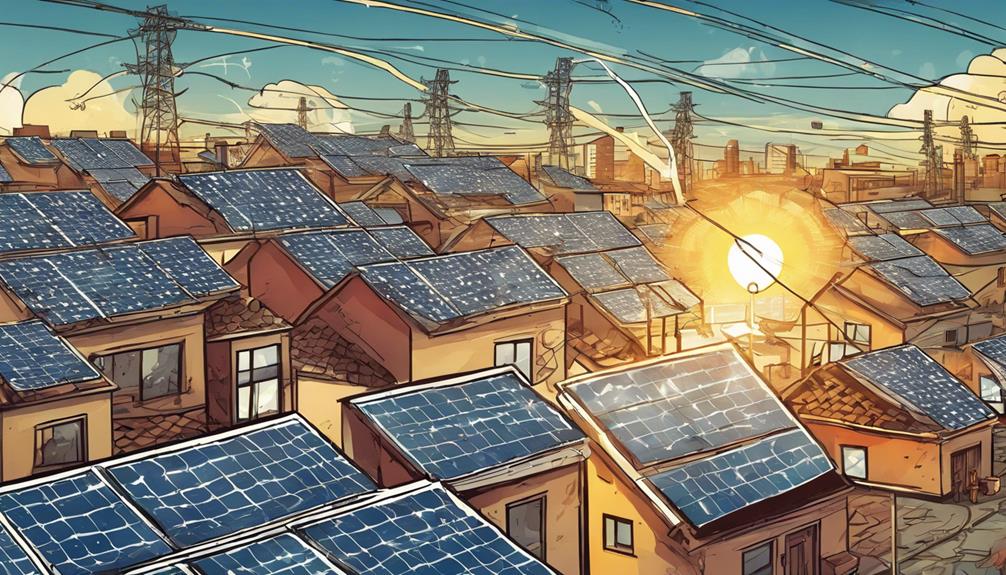
PG&E's grid integration secures that my excess solar power is seamlessly fed back into the grid, balancing energy supply and demand in real-time. This means that when my solar panels produce more energy than I need, it's automatically exported to the grid, reducing the strain on traditional power sources.
In return, I receive credits on my energy bill, which I can use to offset my energy consumption during periods of low solar production. This two-way flow of energy guarantees a stable and efficient grid, allowing me to contribute to a sustainable energy future.
Optimizing Energy Utilization
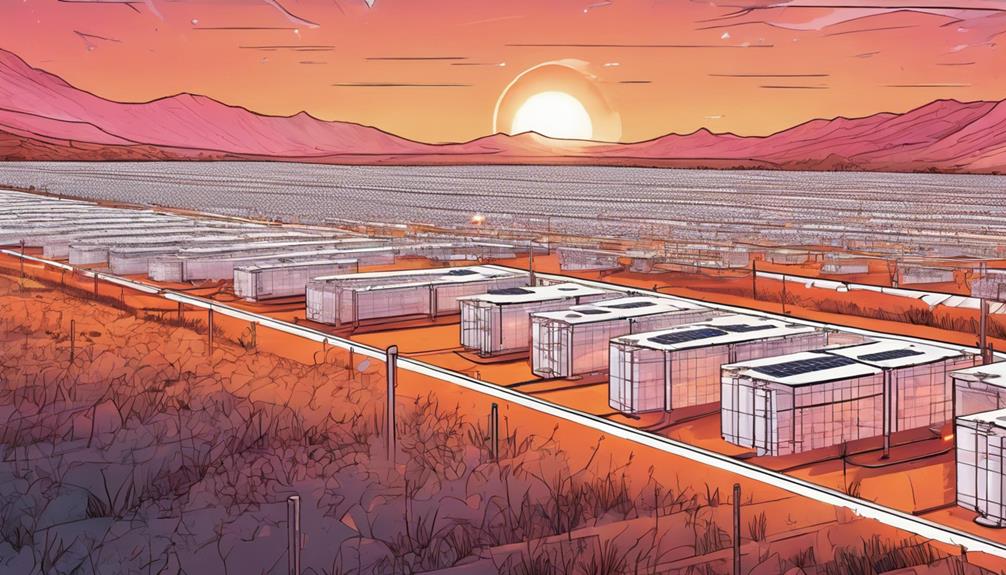
PG&E Ingeniously Harnesses Surplus Solar Energy
Optimizing Energy Utilization
Sustainable Grid System Promotion
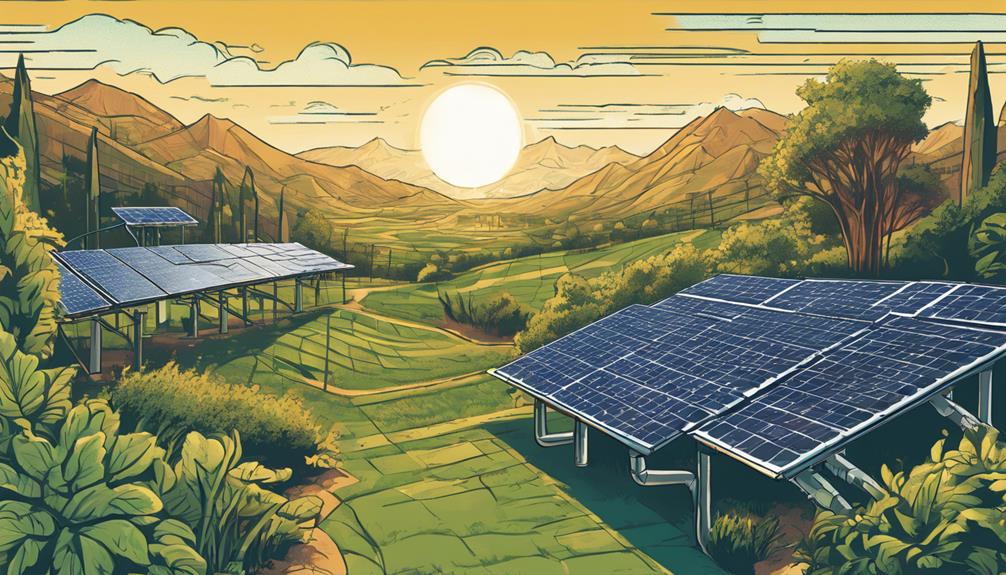
By leveraging surplus solar energy, I'm contributing to a sustainable grid system that reduces our reliance on fossil fuels and mitigates climate change. PG&E's innovative approaches make certain that excess energy is utilized efficiently. Here's a breakdown of how they promote a sustainable grid system:
| Strategy | Description | Benefit |
|---|---|---|
| Net Energy Metering | Credits customers for excess energy | Reduces energy bills |
| Feed-in Tariffs | Pays a fixed rate for surplus energy | Encourages solar adoption |
| Energy Storage | Stores excess energy for later use | Enhances grid stability |
| Time-of-Use Rates | Optimizes energy usage during off-peak hours | Reduces peak demand on the grid |
| Renewable Energy Management | Manages and distributes excess energy | Promotes sustainable energy usage |
Frequently Asked Questions
How Does Pg&E Calculate the Credit for Excess Solar Energy?
"I'm curious about how PG&E calculates the credit for excess solar energy. They measure the surplus power sent back to the grid and deduct it from my future energy bills, providing a clear credit on my account."
Can I Use My Excess Solar Energy to Power My Electric Vehicle?
"As I bask in the sunshine, I wonder if I can fuel my electric vehicle with excess solar energy. Thankfully, PG&E's grid integration allows me to store and use my surplus power to charge my car, reducing my carbon footprint and energizing my daily commute."
Are There Any Maintenance Requirements for Solar Energy Storage Systems?
'I need to regularly check my solar energy storage system's performance, clean the panels, and guarantee the batteries are properly charged to maintain their efficiency and extend their lifespan.'
How Does Pg&E Ensure Grid Stability During Peak Solar Energy Production?
When I generate excess solar energy, I send it back to the grid and get credited. PG&E guarantees grid stability during peak production by using net metering and time-of-use rates to balance supply and demand.
Can I Sell My Excess Solar Energy Back to Pg&E at a Premium Rate?
"I can sell my excess solar energy back to PG&E, but not at a premium rate. Instead, I'll receive credits on my future energy bills or a fixed rate through feed-in tariffs."
How Does PG&E Harness Surplus Solar Energy and How Does It Compare to Other Cleaner Energy Sources?
PG&E harnesses surplus solar energy through a process called net energy metering, where excess energy is sent back to the grid for credits. This approach is more cost-effective and sustainable compared to other cleaner energy sources sought, such as wind or hydro power.
Conclusion
As I reflect on PG&E's ingenious approach, I'm thrilled to see surplus solar energy sparks a sustainable synergy.
By skillfully storing, managing, and integrating excess power, PG&E creates a seamless system that synchronizes supply and demand.
This smart strategy not only saves me money but also supports a sustainable grid, showcasing a shining example of innovation in action.
